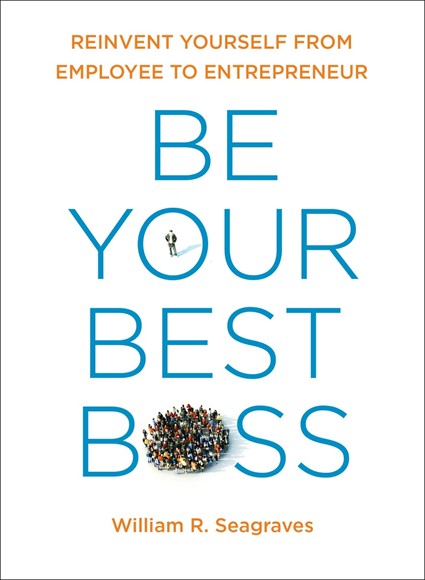Strategically Network for Business Support and Success
/in Practices for Professionals/by Bill SeagravesLeaving the corporate world behind and becoming an entrepreneur is an exciting venture, but it can also put a lot of pressure on you – especially in the first six months. You’ll spend a lot of time learning new things, making adjustments and reacting to situations as they arise. The “bumps” in the road you are likely to encounter are a common occurrence on the entrepreneurial journey, so don’t get bogged down by thinking you’re doing something wrong. You’re not.

Hi there! This article is available for free. Login or register as a StrategyDriven Personal Business Advisor Self-Guided Client by:
Subscribing to the Self Guided Program - It's Free!
About the Author

(TarcherPerigee, on sale February 2016). A serial entrepreneur, Bill coaches mid-career Americans on the best route to successful entrepreneurship. Learn more at yourbestboss.com.
Practices for Professionals – Meetings Best Practice 3: Setting Durations
/in Practices for Professionals, Premium/by Nathan Ives In the age of electronic calendars, we too often allow meeting durations to be established by our software’s preprogrammed defaults, typically 30 minutes to one hour. By settling for software defaults, we risk holding meetings that are too short to arrive at quality decisions or enabling inefficiency such that the meeting expands to meet the excessive amount of time allotted.
In the age of electronic calendars, we too often allow meeting durations to be established by our software’s preprogrammed defaults, typically 30 minutes to one hour. By settling for software defaults, we risk holding meetings that are too short to arrive at quality decisions or enabling inefficiency such that the meeting expands to meet the excessive amount of time allotted.
Hi there! This article is available to StrategyDriven Personal Business Advisor Remote Access and Dedicated Advisor clients and those who subscribe to one of the article's related categories. If you're already a Remote Access or Dedicated Advisor client or a related category subscriber, please log in to read this article. Not a client? We'd love to have you on board. Check out our StrategyDriven Personal Business Advisor service options.
Winning Well – Three Questions That Guarantee Results
/in Practices for Professionals/by Karin Hurt and David DyeSix weeks ago you met with your colleagues, had invigorating discussions, examined alternatives, and came up with an impressive plan. Everyone left the meeting feeling motivated, but then today as everyone entered the room and took their seat, you’re met with sideways glances.
“Did you follow up on that plan?”
“No, how about you?”
A quick shake of the head and you realized that the great idea everyone talked about has languished.
Hi there! This article is available for free. Login or register as a StrategyDriven Personal Business Advisor Self-Guided Client by:
Subscribing to the Self Guided Program - It's Free!
About the Authors

. A former Verizon Wireless executive, she was named to Inc. Magazine’s list of great leadership speakers.

.
For more information visit WinningWellBook.com.
Why Pitching, Persuading, Guiding, and Influencing are Largely Unsuccessful – a thought paper for sellers, coaches, leaders, parents, and managers
/in Management & Leadership, Practices for Professionals/by Sharon Drew MorgenYou recognize what someone needs and offer just the right guidance, product data, or experience to help. Yet, except for occasionally, they don’t act on your brilliance. Why? Why would they prefer to keep doing what they’re doing when it‘s obvious, even to them, they’re less-than-effective? Because making the switch to behave differently is not as simple as desiring to do something different: your information, brilliant and well-intentioned as it is, is not heard accurately, nor do people know how to translate what you’ve offered into action. They’re not ignoring you: they just don’t know what to do with the information.
This article is about systems, Beliefs, change, and our status quo – a thought paper on why giving information (pitches, suggestions, rationale, directives, counselling) doesn’t necessarily produce changed behaviors. It’s a bit wonky; more conventional articles are on my blog www.sharondrewmorgen.com.
Our Status Quo Acts Habitually
Our information, our new ideas or implementation requests, our product descriptions and presentations are relevant of course. But they can only be heard accurately and acted upon when our audience has bought in to, and learned how to manage, any proposed change, and all relevant ‘systems’ are GO.
Adopting new behaviors challenges our ingrained, personal, habitual systems. Our status quo (that mysterious mix of unconscious elements developed over a lifetime that define us) does not shift easily: doing anything – anything – different means replacing a familiar choice with something unfamiliar, with no guaranteed results or precise outcomes.
How can we know up front whether any change is worth the risk? How can we keep our system – our habitual, historic, comfortable, and interconnected configuration of rules, relationships, beliefs, goals, etc. – congruent if we behave outside our proscribed standards?
Without answers to these questions, the risk is too high to change. The change itself isn’t the problem, it’s the disruption. So how can we promote change that a person is willing/able to consider? One way is to stop sharing information until the system has prepared itself to change. Or we can actually facilitate the change before offering information. Let me explain what’s going on.
Behaviors vs Beliefs: Why a System Changes
Whether it’s personal or work, our lives are defined by a set of Beliefs we’ve each developed over the course of our lifetime. We live in neighborhoods, work at jobs, and choose friends in accordance with our Beliefs. We even listen (see What?) according to our Beliefs. Everything we do (our Behaviors) emerges from our Beliefs.
Except when we’re incongruent, our Behaviors carry out our Beliefs. As a life-long liberal, I Believe I must contribute, care for the environment, treat others respectfully. My Beliefs inform my politics, my choice of city, my choice of friends; they are hard-wired, and make me me. And I happily bias my actions and decisions against them. This all happens unconsciously, of course. And therein lies the problem.
New input, and suggestions that require change, challenges the status quo which has been ‘good-enough’ until now. We’re asking people to change their Behaviors before they’ve managed buy-in or figured out how to maintain systems congruence: without knowing how to convert our Beliefs into new Behaviors we face incongruence and feel threatened, causing us to reject, sabotage, forget, misconstrue, or ignore what we’ve heard.
Buy-in is the problem because it means altering rules, changing expectations, or reconsidering outcomes like job descriptions, or timing, or relationships. Everything that will ultimately touch the proposed change must buy-in or the system will continue to reject the information.
Therefore, our information – our brilliant recommendations, thoughts, solutions, or leadership, even when directed by bosses or family – cannot even be heard even if the data is valid or important until the system itself knows how to prepare a new pathway to expected results, comfort, and congruence. We protect our system at all costs. (See Dirty Little Secrets for a thorough explanation of this topic.)
When Information is Applicable
Sales and marketing folks, managers, trainers, coaches, leaders – any profession that focuses on offering advice or promoting action – must stop trying to ‘pitch’ even if someone needs to hear it. Stop trying to lead according to your own vision of what needs to happen. Your job is to facilitate buy-in to promote Excellence. And it might not look like a set of actions you’re familiar with. Once you get agreement and the system creates a way to shift congruently so its Beliefs are upheld (in accordance with the foundational rules, expectations, relationships, etc.), then you’ve got a shot that you’ll be heard or followed.
I’ve developed a change facilitation model (Buying Facilitation®) to manage this buy-in/conversion that I’ve been teaching to sellers, leaders and coaches for decades. But you can design your own model. Here is the relevant question you need to address: How can you design a way to help others find a route to their own excellence by helping them be willing to modify their status quo in a way that shifts congruently?
Once they have a route through to changing the status quo and know they’ll come out butter-side-up, they’ll know what they need to buy, and how and when they want to change. And THEN you can pitch, offer, suggest, or influence.
About the Author


 Scheduling meetings becomes particularly difficult when they involve numerous or senior level attendees. That said, there are several rules of thumb when scheduling meetings that can help ensure on-time attendance by those individuals needed to achieve the meetings objectives.
Scheduling meetings becomes particularly difficult when they involve numerous or senior level attendees. That said, there are several rules of thumb when scheduling meetings that can help ensure on-time attendance by those individuals needed to achieve the meetings objectives.